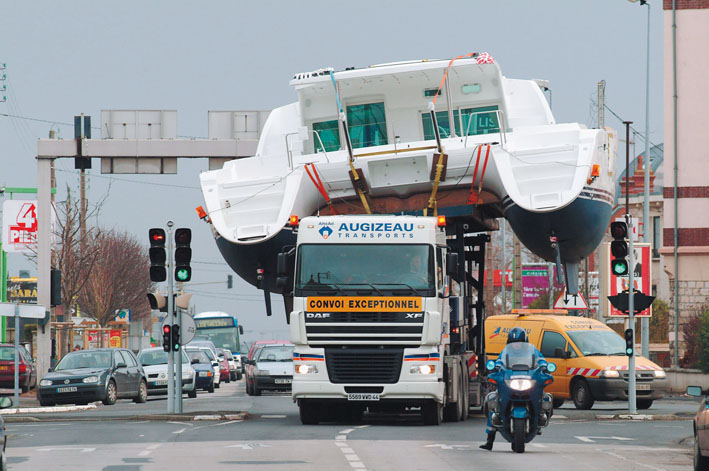You’ve decided to buy your first boat. That’s great – well done. Two thirds of the earth’s surface is covered by water, You are now able to see more of the planet than ever before and much more than walking, or by car, or even flying. There are many reasons why people buy yachts, to cruise, to race, to explore, to relax, to live aboard and a good broker will advise what is best for you. Along with yacht ownership comes certain responsibilities and requisite services such as insurance, finance and moorings. These are obvious and will come as no surprise, and many will already have at least a minimum understanding of them. The one service that is often overlooked, mis-understood and often forgotten about, almost until the sale is made, is the delivery.
Seeing the latest 45ft production catamaran at Annapolis in its pristine boat show condition, one can be forgiven for not giving any thought as to how it got there. Walk around any boat show, marina or boat yard in the world and you will see vessels built in France, South Africa, Poland, China, Brazil and many other places. There is no restriction geographically on the yachts available to purchase because of specialist delivery services.
A yacht may undertake one or more mode of transport on its way to market. The first being is to get the yacht from the factory to it natural environment – water. No problem if the manufacturer is right there on the water and no more than a crane and slings are needed. But more often than not yachts are built away from the coast and need to negotiate the public highway.
With the average size of pleasure yachts increasing every year, this becomes an ever increasing challenge to the trucking companies. Specialised trucks have the ability to manoeuvre under, around and over obstacles. It is a regular sight for some residents in the Vendee, France to see 45 ft Catamarans going past, inches from their bedroom windows on their way to Les Sables d’Olonne.
Commissioning completes the building process and launches the boat. So now the boat is in the water and with access to the sea that connects to the rest of the world. A properly designed, built and commissioned yacht can, in the right hands go anywhere in the world.
Professional and specialist delivery captains sail many thousands of miles every year moving yachts to boat shows, dealers, charter fleets and private owners around the world. Commuting to work can be sailing from France to the Caribbean or Cape Town to Florida. It takes a special kind or captain to do this work. A special mind-set is needed for sailing deliveries that is neither cruising nor racing. Every aspect of the job is to get the yacht to the destination safely, efficiently and in perfect condition. Time taken before departure is spent identifying potential areas that need protection.
Stove tops are covered in foil, cushions are removed and stowed or covered in plastic, mattresses covered and yards of pipe insulation are used to protect vulnerable edges. With interiors stripped and protected it will look nothing like the boat you saw at the boat show. There is a good video that we produced a few years ago that shows the whole process.


